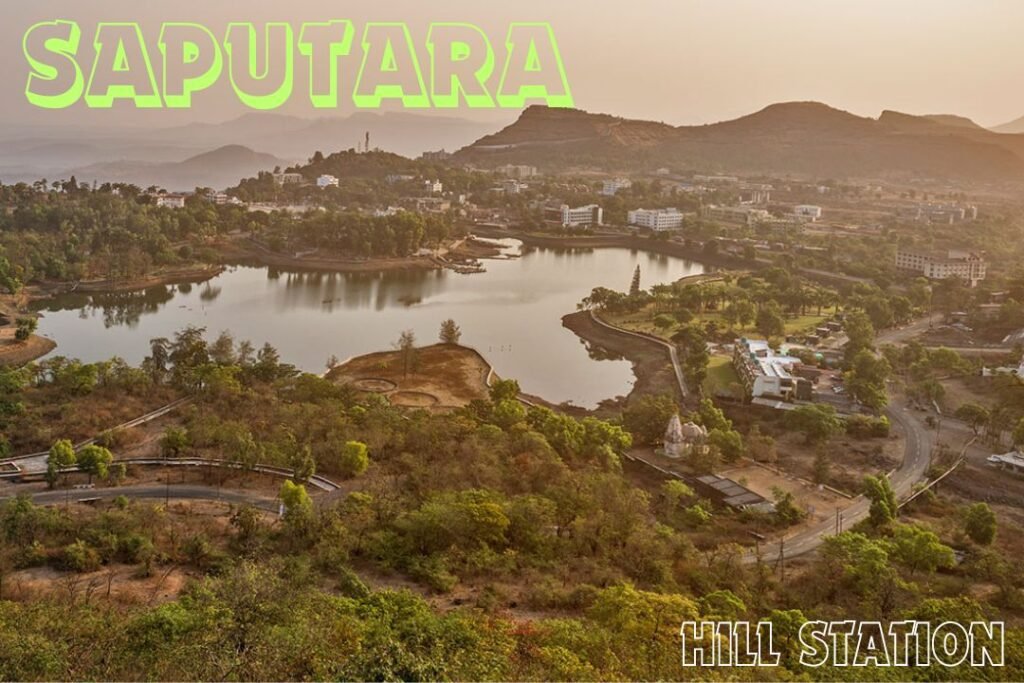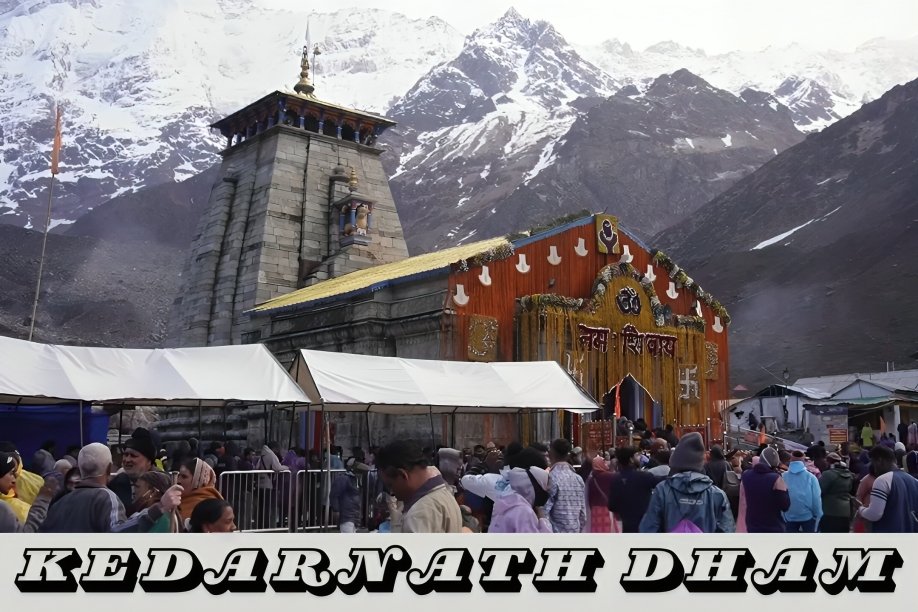Badrinath Dham, one of the most revered pilgrimage sites in India, is situated in the Chamoli district of Uttarakhand, at an elevation of 3,300 meters (10,827 feet). Nestled between the Nar and Narayan mountain ranges, with the Neelkanth peak forming a picturesque backdrop, Badrinath Dham is part of the Char Dham and Chota Char Dham pilgrimage circuits, making it a crucial destination for Hindu devotees. The temple is dedicated to Lord Vishnu, worshipped as Badrinath, and is known for its stunning natural beauty, spiritual ambiance, and historical significance.
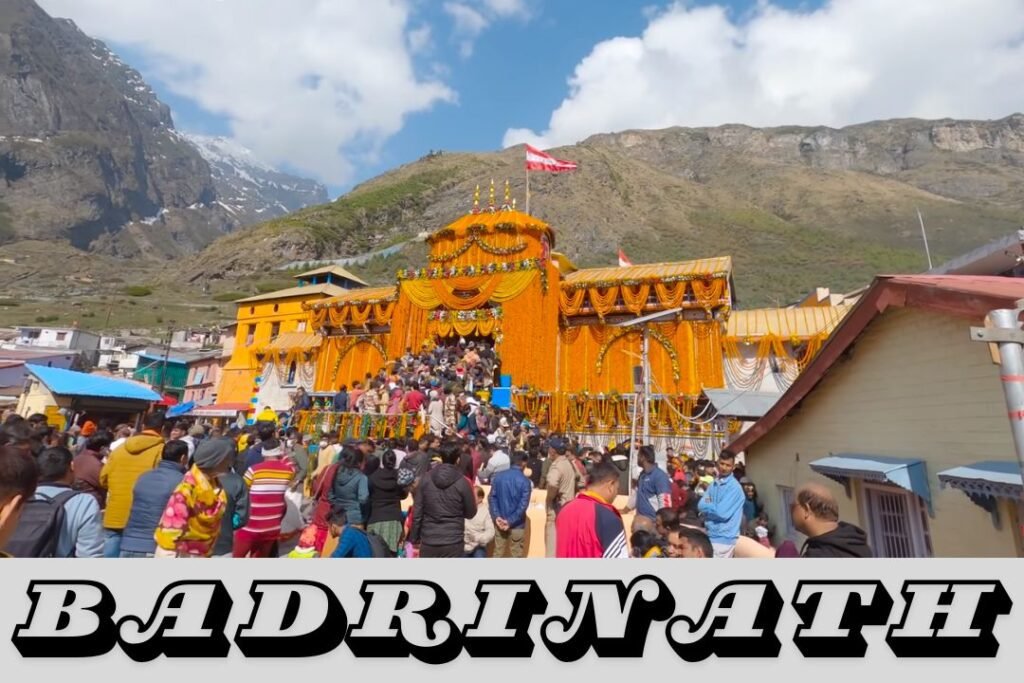
Table of Contents
Key Points
Historical Significance
The history of Badrinath Dham is steeped in legend and mythology, dating back to the Vedic period. The temple’s origins are linked to Adi Shankaracharya, an 8th-century philosopher and theologian who is credited with revitalizing Hinduism. According to legend, Adi Shankaracharya discovered a black stone idol of Lord Badrinath in the Alaknanda River and enshrined it in a cave near the Tapt Kund hot springs. He later established the current temple structure, which has since undergone several renovations and reconstructions due to natural calamities and the ravages of time.
The temple is mentioned in several ancient scriptures, including the Vishnu Purana, Mahabharata, and Skanda Purana. According to these texts, Badrinath Dham was a significant site of meditation for sages and deities. It is believed that Lord Vishnu meditated here for thousands of years, and the Pandavas, the protagonists of the Mahabharata, visited Badrinath during their journey to heaven.
Architectural Marvel
The architecture of Badrinath Temple is a unique blend of traditional North Indian style and influences from the surrounding Himalayan region. The temple’s facade is adorned with vibrant colors and intricate carvings, reflecting its rich cultural heritage. The structure consists of three main sections: the Garbhagriha (sanctum sanctorum), the Darshan Mandap (where rituals are conducted), and the Sabha Mandap (assembly hall for devotees).
The Garbhagriha houses a 1-meter tall black stone idol of Lord Badrinath, seated in a meditative posture known as Padmasana. This idol is believed to be self-manifested and is adorned with a gold canopy and a garland of flowers. Surrounding the main idol are images of other deities, including Kubera (the god of wealth), Narada (the divine sage), Uddhava, and Nar and Narayan (the twin mountain peaks personified).
The temple’s exteriors are decorated with intricate carvings depicting scenes from Hindu mythology, while the interiors are adorned with elaborate paintings and frescoes. The temple complex also includes smaller shrines dedicated to Lakshmi, the consort of Vishnu, and other deities.
Spiritual Significance
Badrinath Dham is considered one of the 108 Divya Desams, the holy abodes of Vishnu as described in the works of the Tamil Alvars (saint poets). The temple holds immense spiritual significance for Hindus, who believe that a pilgrimage to Badrinath can cleanse one’s soul and lead to moksha (liberation from the cycle of birth and death).
The temple is part of the Char Dham Yatra, which includes four sacred shrines: Badrinath, Dwarka, Puri, and Rameshwaram. According to Hindu tradition, visiting these four shrines in a specific order can help devotees attain salvation. Badrinath Dham is also a part of the Chota Char Dham Yatra, which includes Yamunotri, Gangotri, Kedarnath, and Badrinath.
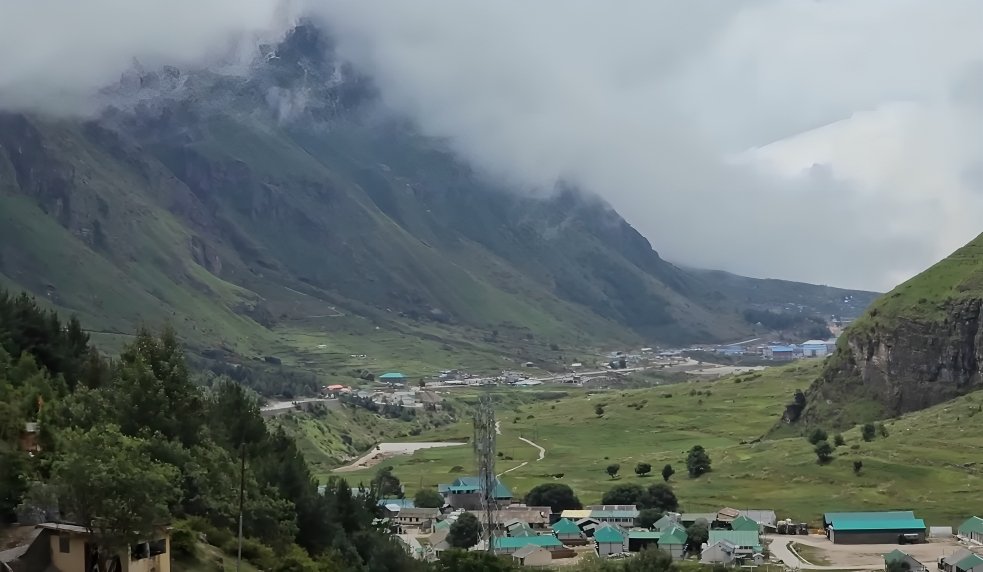
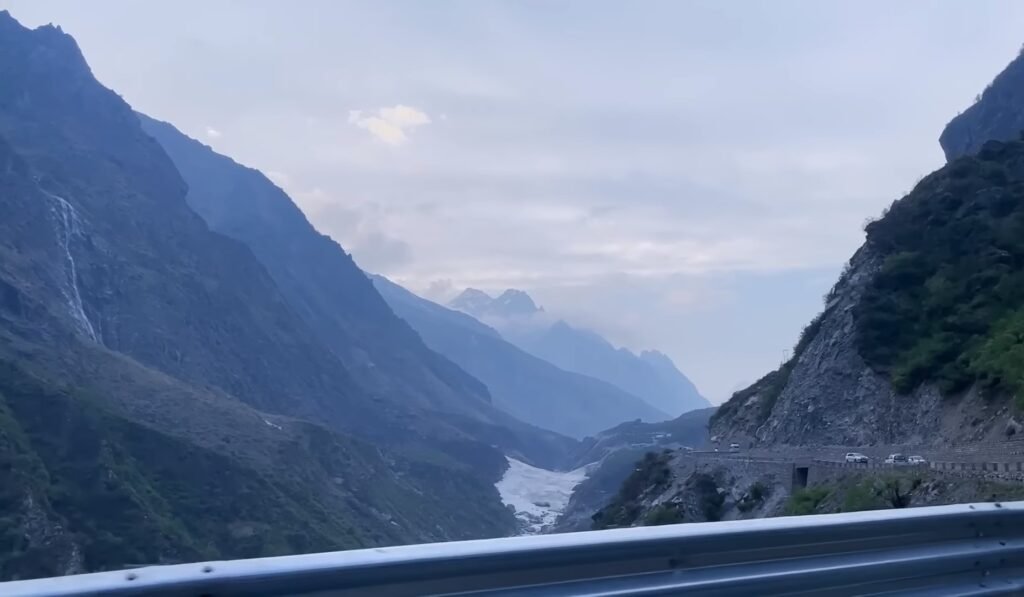
Festivals and Events
Badri-Kedar Festival: Held annually in June, this festival celebrates the cultural heritage of the region. It features classical music and dance performances, showcasing the rich traditions of Garhwal and Kumaon. The festival is organized by the Uttarakhand Tourism Development Board and attracts artists and performers from across the country.
Mata Murti Ka Mela: Celebrated in September, this festival is dedicated to the mother of Lord Badrinath. According to legend, the mother of Lord Badrinath descended to earth in the form of a river to bless her son. During the festival, devotees gather to offer prayers and participate in rituals and processions.
Opening and Closing Ceremonies: The temple opens with grand ceremonies in April/May, marking the beginning of the pilgrimage season. The date of opening is determined by priests on the occasion of Akshaya Tritiya. The closing ceremony, which takes place in October/November, is equally significant. The temple is closed for six months during the winter due to heavy snowfall, and the deity is moved to the Narasimha Temple in Joshimath.
Spiritual Practices
Puja and Aarti: Daily rituals at Badrinath Temple include the morning and evening aarti, where priests offer prayers, light lamps, and chant hymns in praise of Lord Vishnu. The aarti ceremonies are accompanied by devotional music and create a deeply spiritual atmosphere.
Meditation and Yoga: The serene environment of Badrinath, surrounded by the majestic Himalayas, is ideal for meditation and yoga. Many spiritual seekers visit Badrinath to connect with their inner selves and attain spiritual enlightenment. The temple premises and nearby areas offer peaceful spots for meditation and reflection.
Pilgrimage and Rituals: Pilgrims take a holy dip in the Tapt Kund hot springs before entering the temple, as it is believed to purify the body and soul. The Brahma Kapal, a flat platform on the banks of the Alaknanda River, is where rituals for the departed souls are performed. It is considered essential for attaining salvation for one’s ancestors.
Char Dham Yatra: As part of the Char Dham Yatra, pilgrims visit Badrinath along with Kedarnath, Gangotri, and Yamunotri. This pilgrimage is considered highly auspicious and is believed to cleanse the soul of all sins. The journey is challenging but rewarding, offering spiritual fulfillment and a deep connection with the divine.
Surrounding Attractions of Badrinath Dham
Tapta Kund
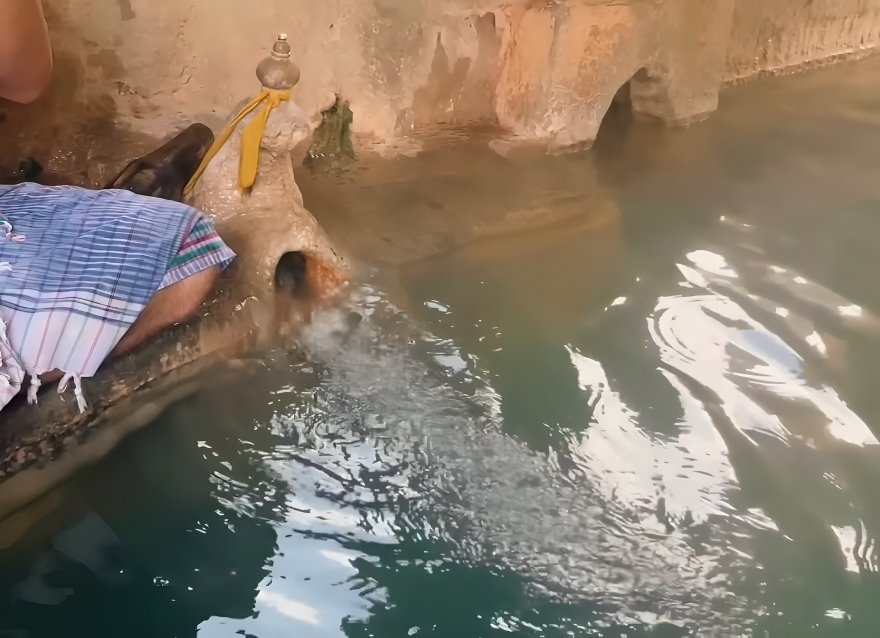
Temperature: The water temperature remains around 45-50 degrees Celsius throughout the year.
Medicinal Properties: The water is believed to cure skin diseases and rheumatism due to its high sulphur content.
Hot Spring: Tapta Kund is a natural hot water spring located near the Badrinath Temple. It is believed to have curative properties.
Ritual Bathing: Pilgrims take a holy dip in Tapta Kund before entering the Badrinath Temple as a purification ritual.
Mythological Significance: It is said that the water in the Kund is heated by the Lord Agni (Fire God).
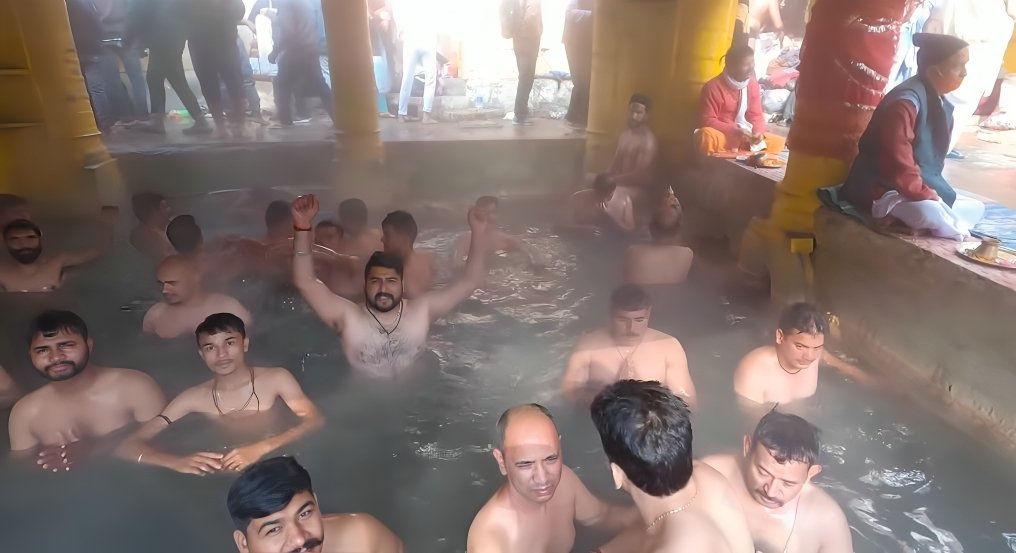
Narad Kund
Sacred Pool: Narad Kund is a sacred recess in the Alaknanda River, where the idol of Lord Badrinath was found.
Historical Importance: It is named after Narad Muni, a revered sage who performed penance here.
Purification: Devotees take a dip in Narad Kund for spiritual purification.
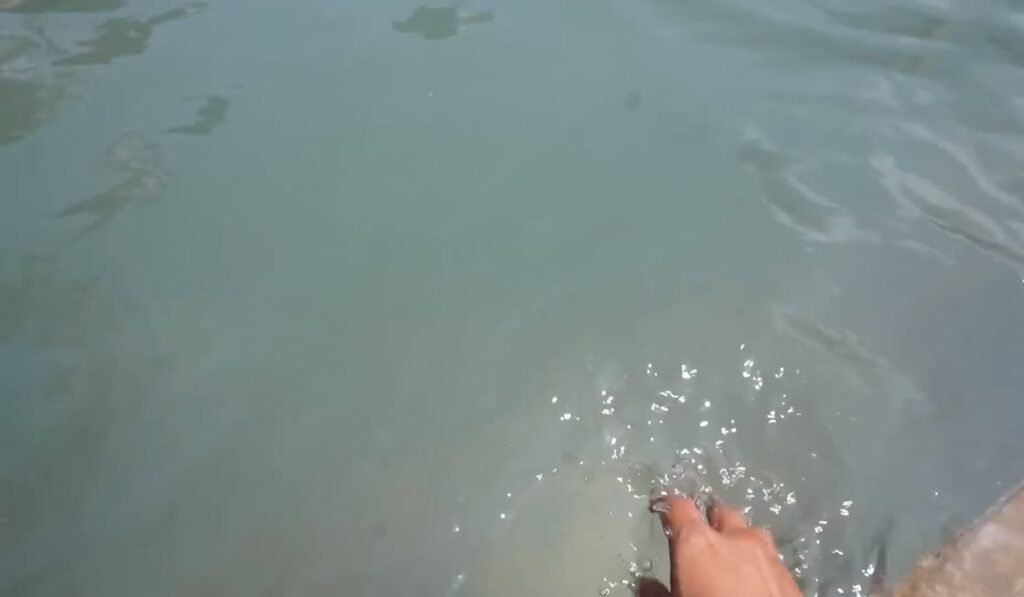
Proximity: It is located close to the Tapta Kund and the Badrinath Temple.
Spiritual Belief: It is believed that bathing in Narad Kund absolves one of sins and brings divine blessings.
Alaknanda River
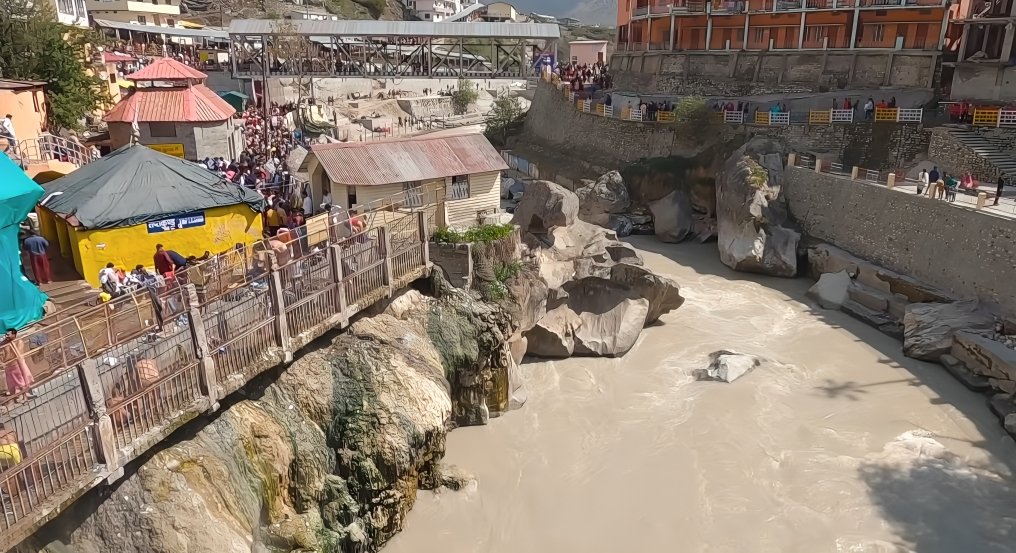
Holy River: The Alaknanda River is one of the primary headstreams of the Ganges, originating from the Satopanth Glacier.
Scenic Beauty: The river flows beside the Badrinath Temple, offering stunning views and a tranquil environment.
Cultural Significance: The river is considered sacred and is a vital part of Hindu mythology.
Religious Rituals: Pilgrims perform various rituals on the banks of the Alaknanda, including the Tarpan (rituals for ancestors).
Adventure Activities: The Alaknanda is also popular for white-water rafting and other adventure sports.
Brahma Kapal
Ritual Platform: Brahma Kapal is a flat platform on the banks of the Alaknanda River used for performing rituals for deceased ancestors.
Salvation: It is believed that performing rituals here ensures the salvation of the departed souls.
Mythological Belief: According to legend, Lord Brahma himself resides here and grants moksha (liberation).

Spiritual Importance: It is considered essential for Hindus to perform Shraddha rites at Brahma Kapal.
Adi Kedareshwara Temple
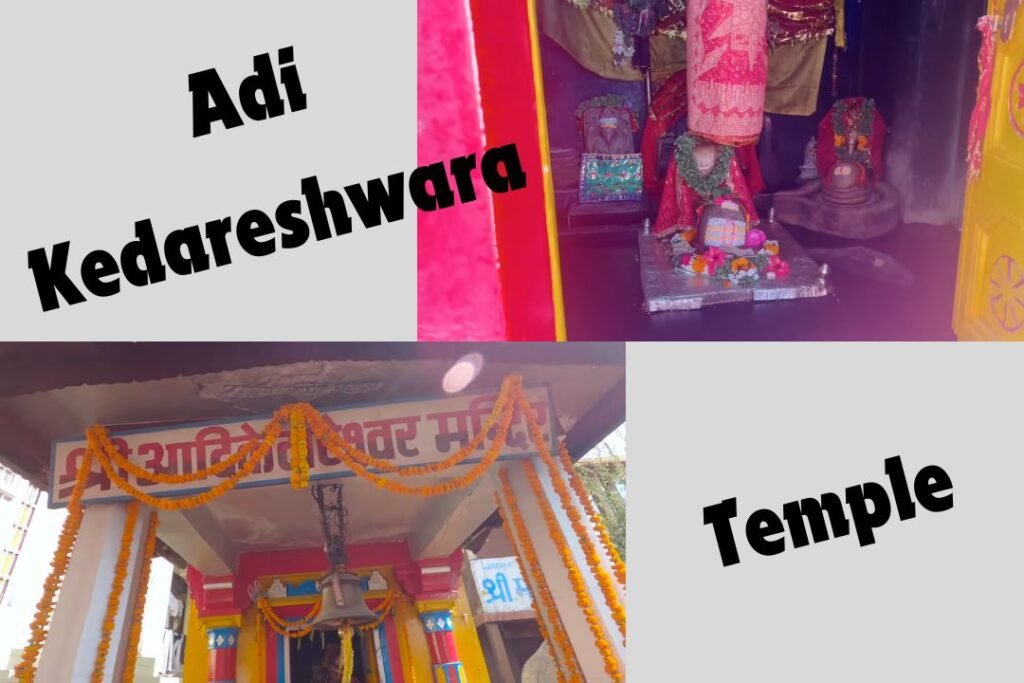
Historical Temple: Adi Kedareshwara Temple is dedicated to Lord Shiva and is believed to have been established by Adi Shankaracharya.
Spiritual Significance: It is said that Adi Kedareshwara Temple is a replica of the Kedarnath Temple.
Pilgrimage Site: Devotees visit this temple to seek blessings from Lord Shiva before proceeding to Badrinath.
Cultural Heritage: The temple is an important part of the region’s cultural and spiritual heritage.
Vishnu Charan Paduka
Sacred Footprint: Vishnu Charan Paduka is a rock with an impression of Lord Vishnu’s footprint.
Mythological Tale: It is believed that Lord Vishnu set his foot here while descending to earth.
Short Trek: The site is accessible via a short trek from Badrinath Temple.
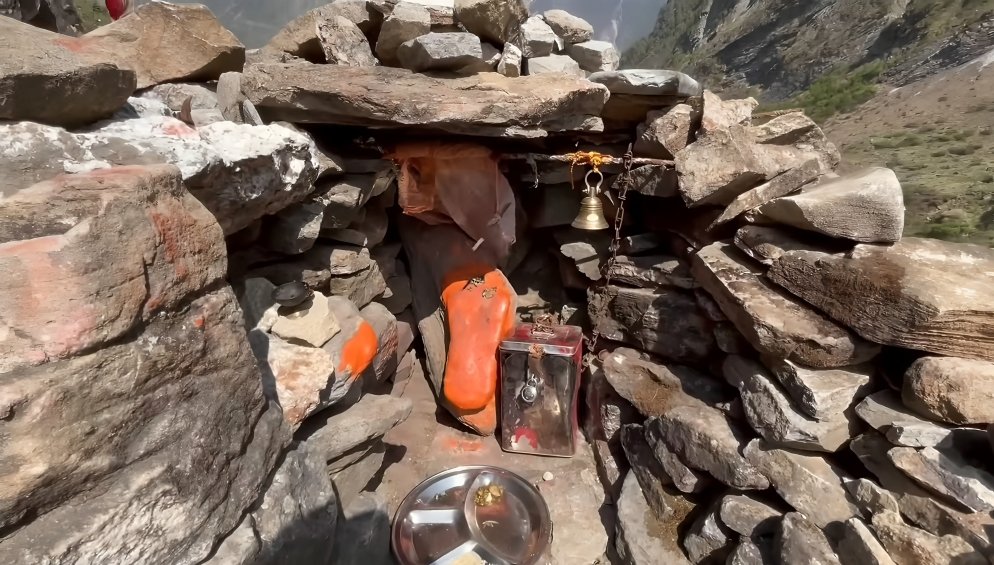
Spiritual Visit: Pilgrims visit this spot to seek blessings and pay their respects to Lord Vishnu.
Scenic Views: The trek offers beautiful views of the surrounding mountains and valleys.
Hanuman Chatti
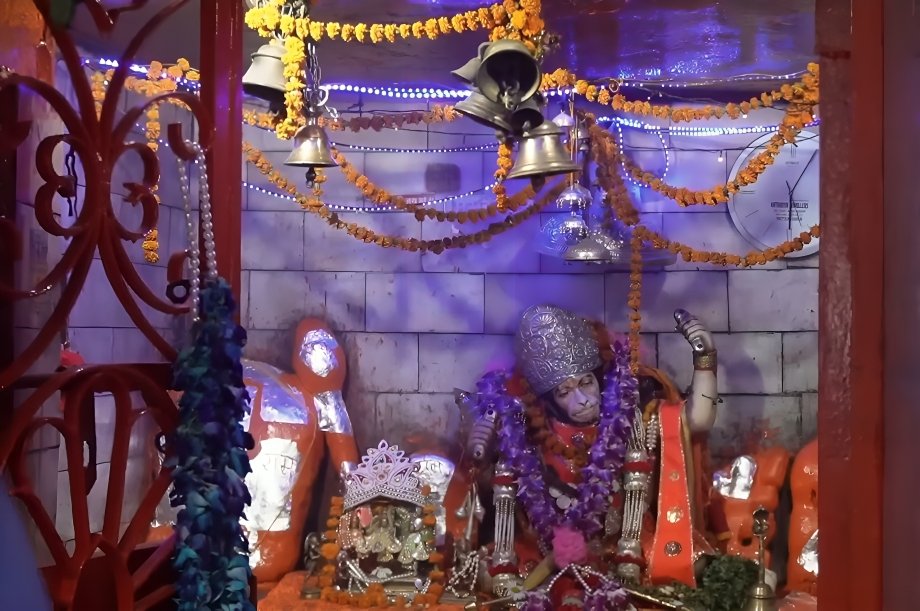
Pilgrimage Spot: Hanuman Chatti is a revered spot dedicated to Lord Hanuman, located about 3 km from Badrinath.
Mythological Significance: It is believed that Lord Hanuman and Bhima met here.
Serene Environment: The site is surrounded by lush greenery and offers a peaceful atmosphere.
Trekking Base: Hanuman Chatti serves as a base for various treks in the region.
Mana Gaon
Last Indian Village: Mana Gaon is the last Indian village before the Tibetan border. Currently it has been declared as the first village of India.
Cultural Heritage: The village is known for its traditional houses, lifestyle, and cultural practices.
Natural Beauty: The village offers stunning views of the surrounding mountains and valleys.
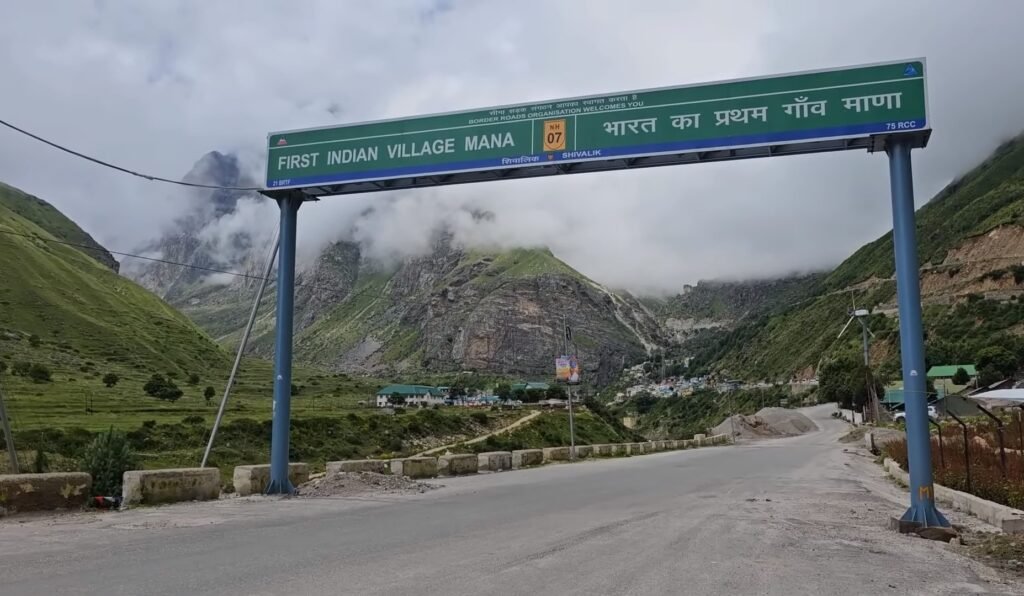
Mythological Sites: Mana Village is home to mythological sites such as Vyas Gufa and Ganesh Gufa.
Local Crafts: Visitors can explore local handicrafts and woolen products made by the villagers.
Ganesh Gufa
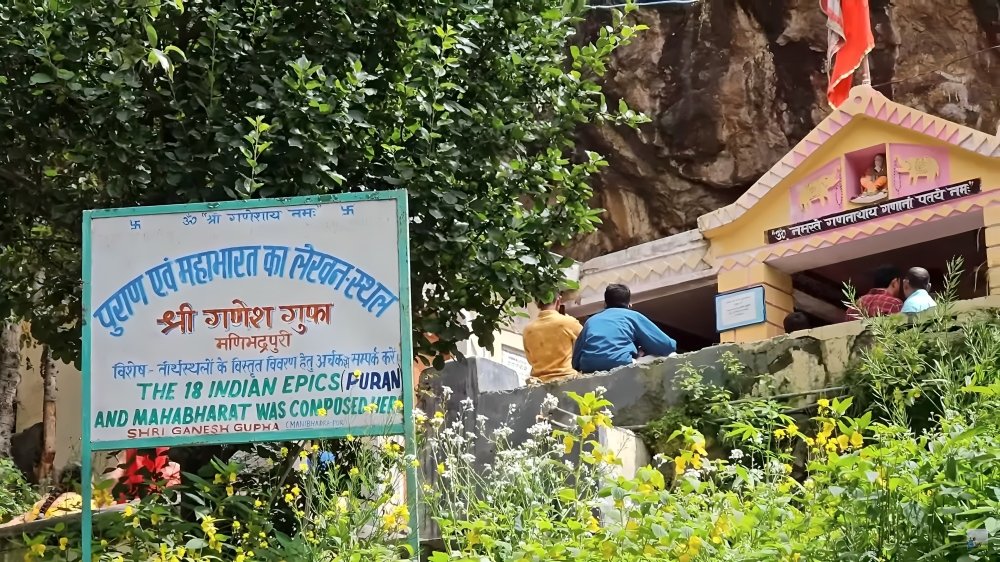
Ancient Cave: Ganesh Gufa is an ancient cave where Lord Ganesha is believed to have written the Mahabharata as dictated by Sage Vyas.
Mythological Importance: It is said that Lord Ganesha resided in this cave while transcribing the epic.
Spiritual Visit: Devotees visit this cave to seek blessings from Lord Ganesha.
Historical Significance: The cave holds immense historical and spiritual significance in Hindu mythology.
Proximity: It is located close to Mana Village and can be visited along with other attractions.
Vyas Pothi
Sacred Site: Vyas Pothi is believed to be the place where Sage Vyas composed the Mahabharata.
Ancient Manuscripts: The site is associated with ancient manuscripts and scriptures written by Sage Vyas.
Historical Importance: It holds great historical and spiritual significance for Hindu devotees.

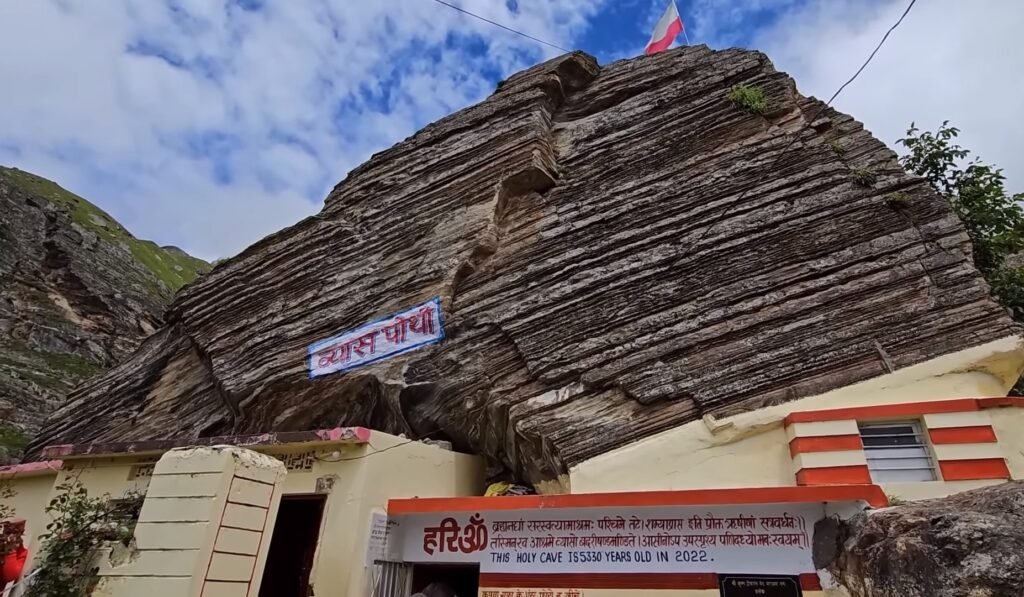
Peaceful Environment: The site offers a tranquil environment for meditation and reflection.
Proximity: It is located near Mana Village and can be visited along with Ganesh Gufa.
Yoga Badri Temple
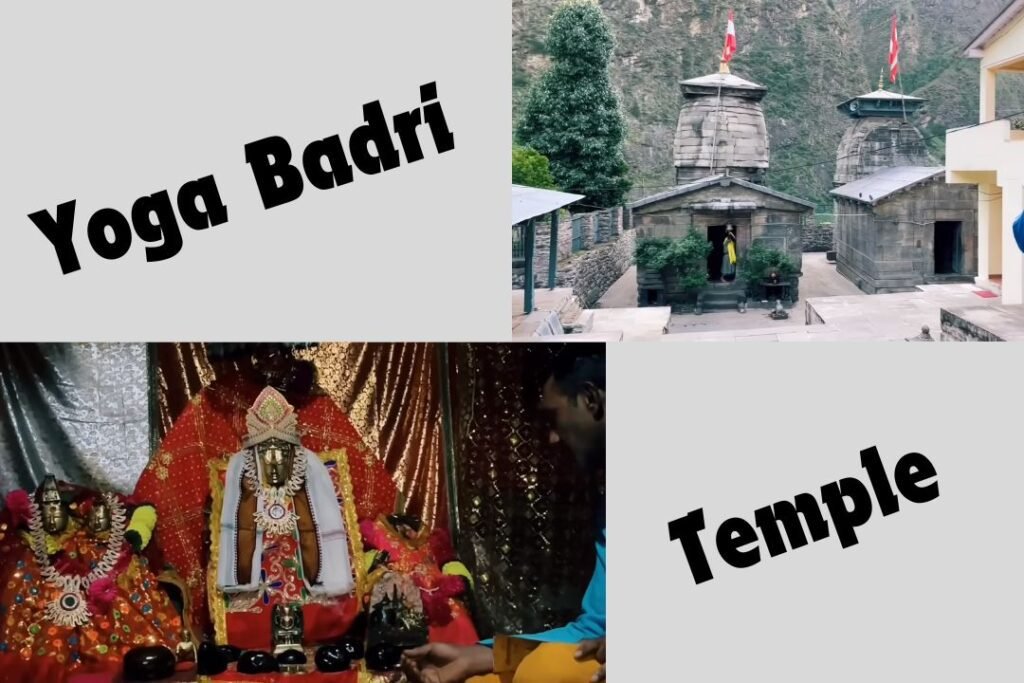
Panch Badri: Yoga Badri is one of the five Badri temples dedicated to Lord Vishnu.
Historical Significance: The temple is believed to date back to the 8th century and was established by Adi Shankaracharya.
Spiritual Importance: It is considered an important pilgrimage site for devotees of Lord Vishnu.
Scenic Location: The temple is situated in Pandukeshwar, offering beautiful views of the surrounding mountains.
Religious Ceremonies: Various rituals and ceremonies are performed here, attracting numerous pilgrims.
Saraswati Origin
Mythological River: The Saraswati River is believed to originate from Mana Village.
Sacred Waters: The river is considered sacred and holds immense spiritual significance in Hindu mythology.
Mythological Tale: It is said that the Saraswati River joins the Alaknanda River at Keshav Prayag.
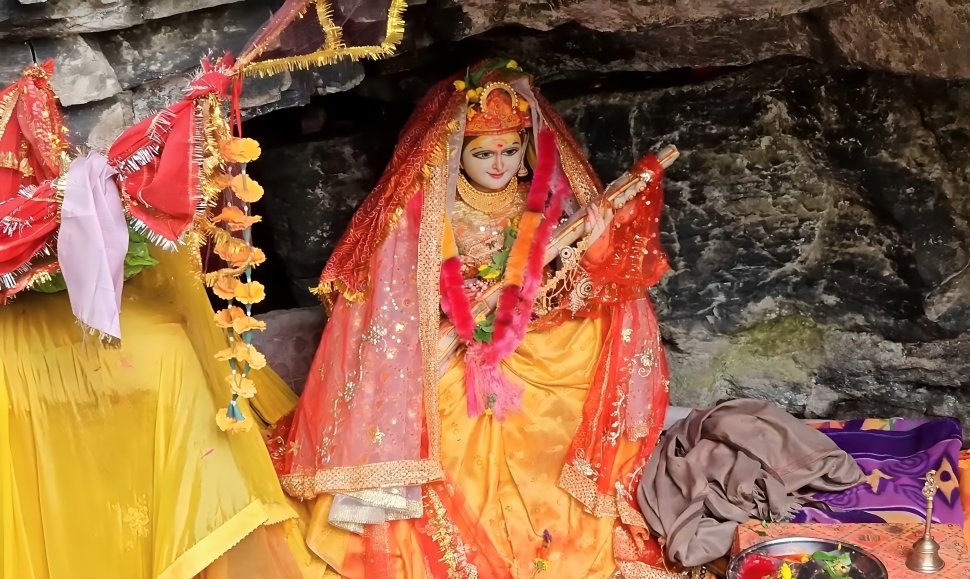
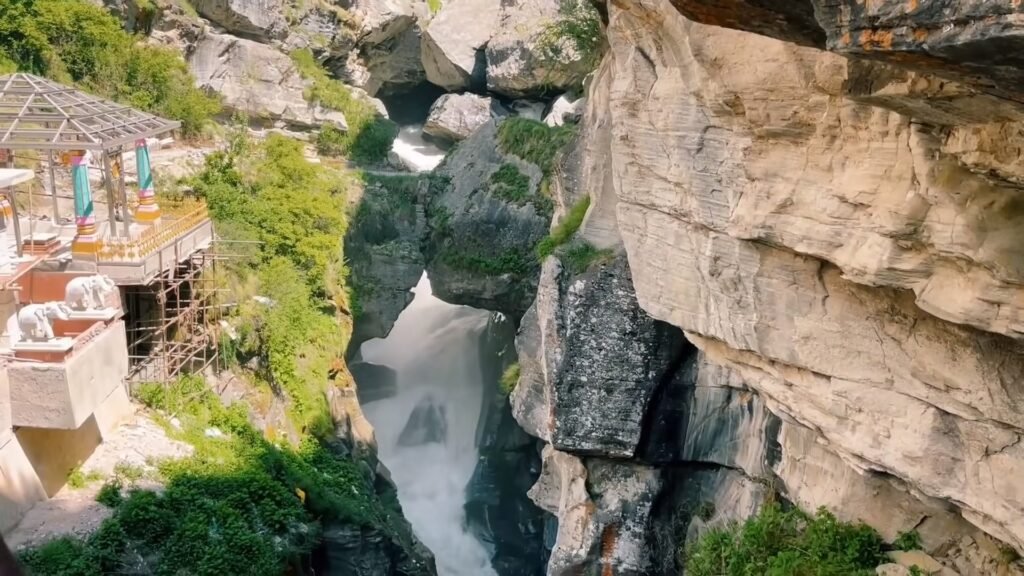
Natural Beauty: The origin of the Saraswati River is surrounded by breathtaking landscapes.
Pilgrimage Site: Devotees visit the origin of the Saraswati River to offer prayers and perform rituals.
Swargarohan Dwar
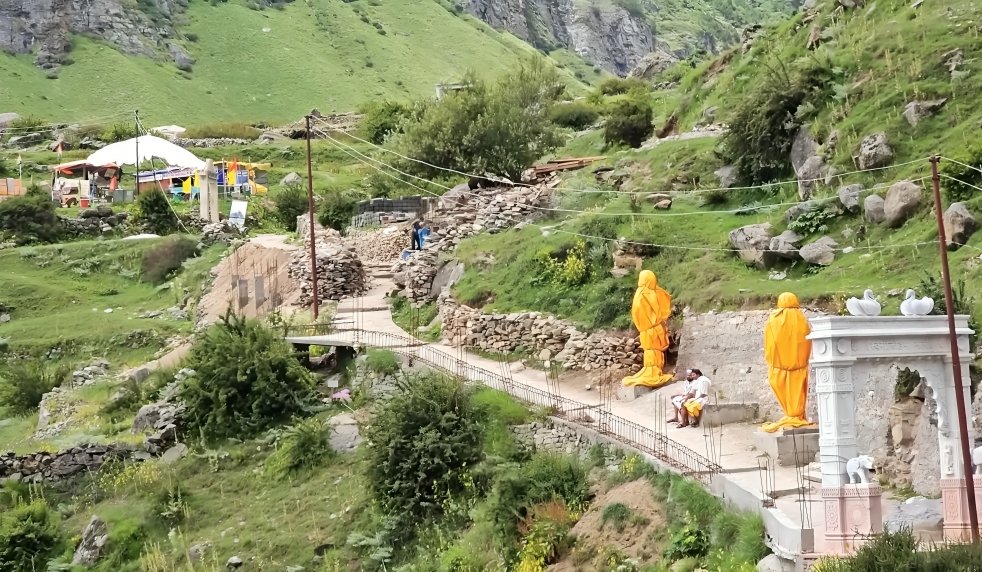
Mythological Site: Swargarohan Dwar is believed to be the gateway to heaven used by the Pandavas.
Trekking Destination: The site is accessible via a challenging trek from Mana Village.
Historical Significance: It holds immense historical and mythological importance in Hinduism.
Scenic Views: The trek offers stunning views of the surrounding Himalayan ranges.
Spiritual Journey: Pilgrims undertake the trek as part of their spiritual journey to seek divine blessings.
Vasudhara Falls
Beautiful Waterfall: Vasudhara Falls is a stunning waterfall located about 9 km from Badrinath and 5 km from Swargarohan Gate.
Mythology: It is believed that the water of Vasudhara Falls does not touch impure visitors at all.
Natural Beauty: The falls are surrounded by lush greenery and rocky terrain.
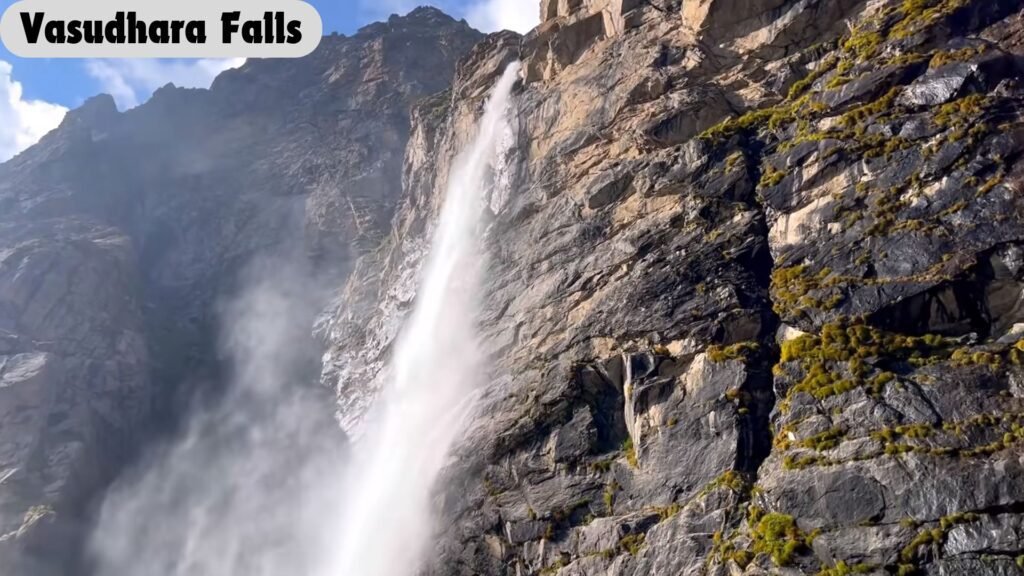
Scenic Trek: The trek to Vasudhara Falls offers breathtaking views of the Himalayan landscape.
Peaceful Spot: It is an ideal spot for meditation and reflection, away from the hustle and bustle of the temple area.
Ashtakshari Kshetram

Sacred Place: Ashtakshari Kshetram is a revered site dedicated to Lord Vishnu.
Spiritual Importance: The site is associated with the chanting of the Ashtakshari Mantra, an eight-syllable mantra of Lord Vishnu.
Pilgrimage Site: Devotees visit this site to seek blessings and perform spiritual practices.
Scenic Location: It is situated in a picturesque location, surrounded by natural beauty.
Leela Dhungi
Sacred Rock: Leela Dhungi is a sacred rock associated with various mythological tales.
Spiritual Significance: It is believed that divine plays (leelas) of Lord Vishnu took place here.
Pilgrimage Site: Devotees visit Leela Dhungi to seek blessings and perform rituals.
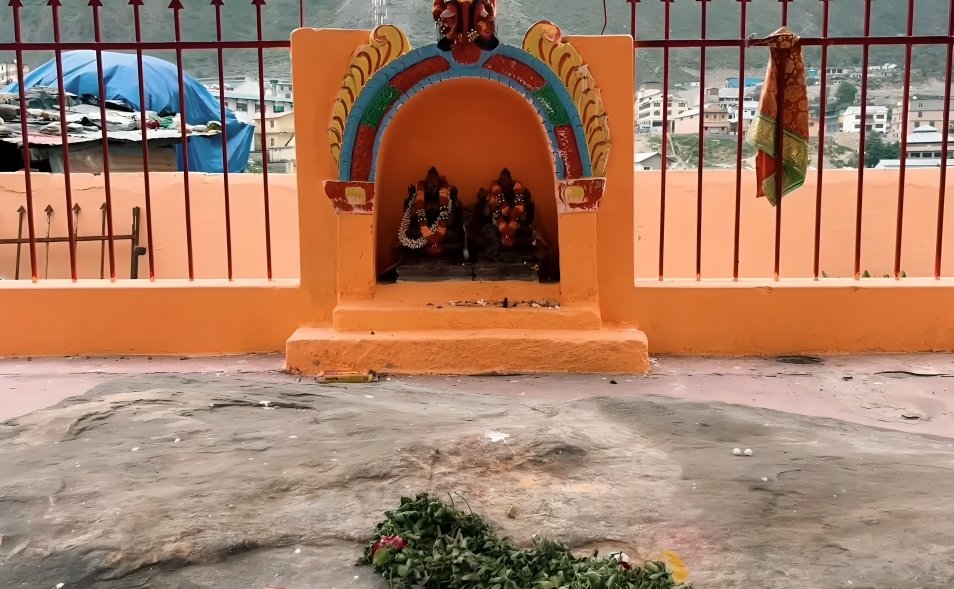
Historical Importance: The site holds historical and spiritual importance in Hinduism.
Scenic Spot: It offers beautiful views of the surrounding mountains and valleys.
Narsingh Temple
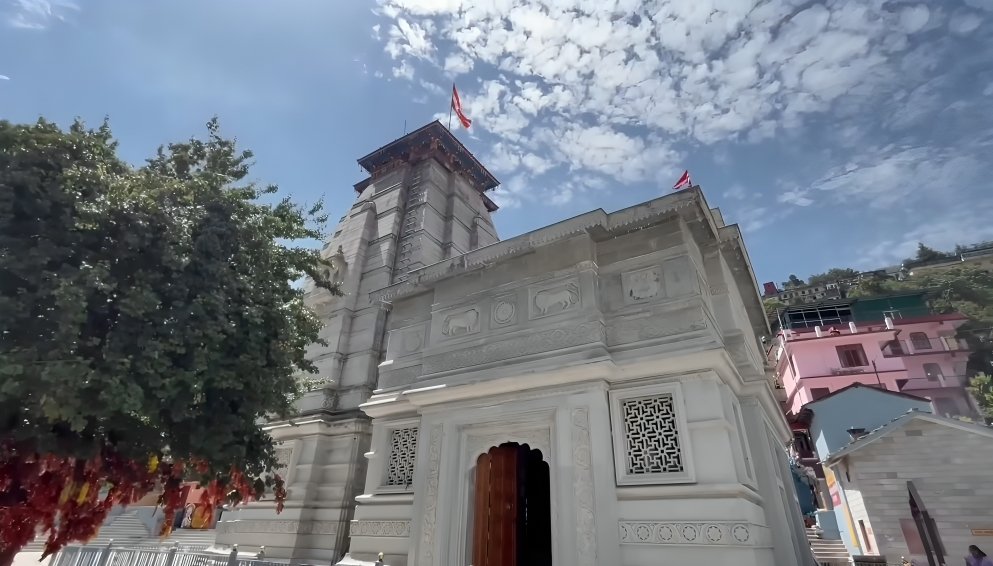
Ancient Temple: Narsingh Temple is dedicated to Lord Narsingh, an incarnation of Lord Vishnu.
Mythological Tale: It is believed that the idol of Narsingh will eventually turn into a left hand, signaling the end of the world.
Historical Significance: The temple dates back to ancient times and holds great historical importance.
Spiritual Visit: Devotees visit the temple to seek blessings and learn about its mythological significance.
Proximity: It is located in Joshimath, close to Badrinath, and can be visited as part of the pilgrimage.
How to Reach
By Air
Nearest Airport: The nearest airport to Badrinath is Jolly Grant Airport in Dehradun, which is about 311 km away.
Connectivity: Jolly Grant Airport is well-connected to major cities like Delhi, Mumbai, and Bangalore through regular flights.
From the Airport: From Jolly Grant Airport, you can hire a taxi or take a bus to reach Badrinath. The journey by road from the airport to Badrinath takes approximately 10-12 hours.
By Train
Nearest Railway Stations:
- Rishikesh Railway Station: Located about 295 km from Badrinath, Rishikesh is the closest railhead.
- Haridwar Railway Station: Located about 320 km from Badrinath, Haridwar is another convenient option.
Connectivity: Both Rishikesh and Haridwar are well-connected to major cities in India like Delhi, Mumbai, Kolkata, and Chennai.
From the Railway Station: From Rishikesh or Haridwar, you can hire a taxi or take a bus to reach Badrinath. The journey by road from these stations to Badrinath takes approximately 10-12 hours.
By Road
Direct Bus Services: There are direct bus services to Badrinath from various cities in Uttarakhand like Haridwar, Rishikesh, and Dehradun. These government buses are operated by the Uttarakhand Transport Corporation (UTC).
Private Taxis and Shared Cabs: You can hire a private taxi or take a shared cab from Rishikesh, Haridwar, or Dehradun to Badrinath.
Self-Drive: If you prefer to drive, you can take the NH58 highway, which connects Badrinath with major cities in Uttarakhand. The road conditions can be challenging, especially during the monsoon season, so it’s advisable to check weather conditions and road status before starting your journey.
By Helicopter
Helicopter Services: There are helicopter services available from Dehradun, Phata, and other locations to Badrinath. These services are operated by private companies and are especially convenient for senior citizens and those who want to avoid the long road journey.
Booking: Helicopter services need to be booked in advance, especially during the peak pilgrimage season.
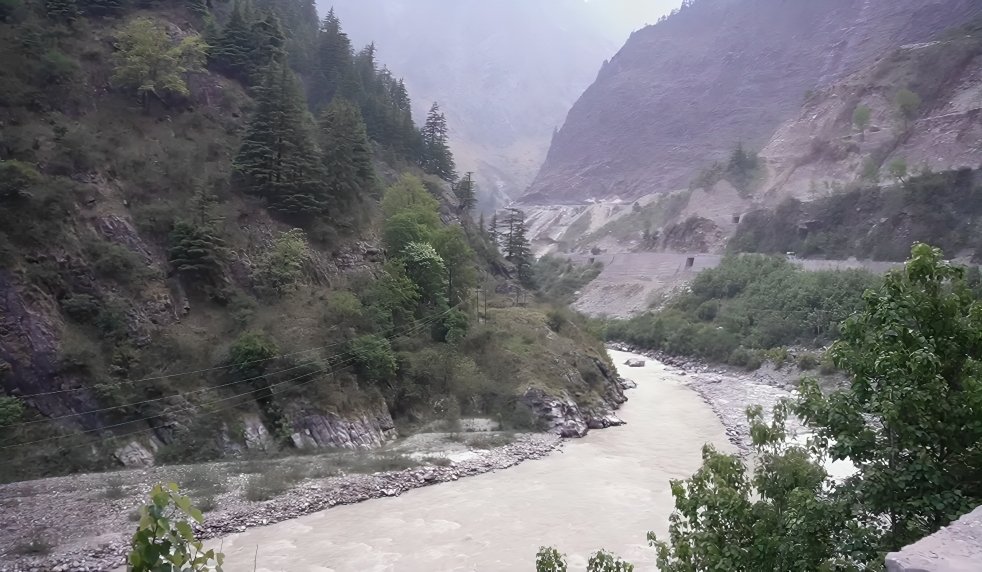
Accommodations
Budget Accommodations
- GMVN Tourist Bungalow (Garhwal Mandal Vikas Nigam): Managed by the government, GMVN Tourist Bungalows provide basic amenities at affordable rates. Conveniently located near the Badrinath Temple. INR 500 – INR 1500 per night.
- Sarovar Portico: A budget-friendly hotel offering comfortable stays with essential amenities. Located close to the Badrinath Temple. INR 1000 – INR 2500 per night stay.
- Bharat Sevashram Sangha: A charitable organization providing budget accommodation to pilgrims. Near the Badrinath Temple. INR 300 – INR 1000 per night (donation-based).
Mid-Range Accommodations
- New Snow Crest Hotel: A mid-range hotel offering comfortable stays with good amenities. Approximately 1 km from the Badrinath Temple. INR 2000 – INR 4000 per night.
- Narayan Palace Hotel: A popular choice among pilgrims, offering good facilities and services. Close to the Badrinath Temple. INR 2500 – INR 5000 per night.
- Hotel Dwarikesh: Provides mid-range accommodation with decent facilities. Near the temple, making it convenient for pilgrims. INR 1500 – INR 3000 per night.
Luxury Accommodations
- Sarovar Portico, Badrinath: A luxury hotel offering premium facilities and comfort. Close to the Badrinath Temple. INR 4000 – INR 8000 per night stay.
- Hotel Yoga: A high-end hotel known for its excellent service and amenities. Conveniently located near the temple. INR 5000 – INR 9000 per night.
- Hotel Nanda Residency: A luxury hotel providing a blend of modern amenities and traditional hospitality. Close to the Badrinath Temple. INR 4500 – INR 8500 per night.
Local Cuisine
Kedarnath Bhog: A special meal offered to the deities and later distributed among the pilgrims as prasad. Includes rice, dal (lentils), sabzi (vegetables), and roti (flatbread), made using pure and fresh ingredients.
Aloo Ke Gutke: A popular and simple potato dish, commonly prepared in the region. Potatoes sautéed with local spices, cumin seeds, coriander powder, and garnished with fresh coriander leaves.
Chainsoo: A traditional Garhwali dish made from black gram dal (urad dal). Roasted black gram, garlic, ginger, onion, and a blend of local spices.
Kafuli: A nutritious and wholesome dish made from green leafy vegetables. Spinach, fenugreek leaves, and other local greens, cooked with garlic, ginger, and spices.
Phaanu: A thick, hearty soup made from mixed lentils. Different types of lentils, garlic, ginger, and a variety of spices.
Gahat Ki Dal (Kulath): A traditional lentil dish made from horse gram (kulath), garlic, ginger, and a mix of spices.
Dubuk: A winter delicacy made from Bhatt ki dal (a type of black soybean), potatoes, garlic, ginger, and spices.
Arsa: A traditional sweet dish commonly prepared during festivals and special occasions. Rice flour, jaggery, and ghee (clarified butter).
Singori: A unique sweet dish wrapped in maalu leaves, offering a distinct flavor and presentation. The mixture of khoya, sugar, and coconut is cooked and then wrapped in maalu leaves, giving it a unique taste and fragrance.
Bal Mithai: A famous sweet from the region, often compared to fudge. Khoya (reduced milk) and sugar, coated with white sugar balls.
Travel Tips and Safety Advice
Best Time to Visit: The ideal time to visit Badrinath is between May and June or September and October when the weather is pleasant and the temple is open.
Advance Booking: Book your accommodation and travel tickets in advance, especially during peak season, to avoid last-minute hassles.
Weather Conditions: Check the weather forecast before your trip as the region is prone to sudden weather changes.
Acclimatization: Spend a day acclimatizing to the high altitude to avoid altitude sickness.
Layered Clothing: Pack warm clothes in layers, including thermal wear, jackets, and gloves, as temperatures can drop significantly.
Comfortable Footwear: Wear sturdy and comfortable shoes suitable for walking on uneven and sometimes slippery terrain.
Photography: Capture the stunning architecture of the temple, especially during early morning or late evening. The snow-capped Neelkanth Peak provides a majestic backdrop for photographs. A beautiful waterfall surrounded by scenic landscapes, perfect for nature photography. The region is rich in biodiversity, offering opportunities to photograph unique Himalayan plants and wildlife.
Travel Light: Carry only essential items to make your journey easier, especially if you have to trek or walk long distances.
Cash Availability: Carry sufficient cash as ATMs may not be readily available or operational.
Local Cuisine: Try the local cuisine and prasad offered at the temple for an authentic experience.
Health Check: Consult your doctor before traveling, especially if you have any pre-existing medical conditions.
Emergency Kit: Carry a basic first aid kit, including medications for altitude sickness, headaches, and stomach issues.
Hydration: Drink plenty of water to stay hydrated, but avoid drinking tap water. Use bottled or boiled water.
Travel Insurance: Get travel insurance that covers medical emergencies, trip cancellations, and delays.
Follow Guidelines: Adhere to local rules and guidelines, especially regarding temple visits and religious practices.
Avoid Overexertion: Don’t overexert yourself, especially during the initial days at high altitude. Take regular breaks.
Secure Belongings: Keep your valuables secure and be mindful of your belongings, especially in crowded areas.
Road Safety: Roads to Badrinath can be narrow and winding. If self-driving, be cautious and consider hiring a local driver.
Wildlife Awareness: Be aware of the local wildlife, and avoid venturing into unknown areas alone.
Conclusion
Badrinath Dham, nestled in the majestic Himalayas, is not just a revered pilgrimage site but also a haven for nature lovers and adventure seekers. Its rich history, architectural marvels, and spiritual significance make it a unique destination. The serene landscapes, coupled with the warmth of local hospitality and the delightful regional cuisine, offer an unforgettable experience. Whether you’re seeking spiritual solace, exploring ancient temples, or capturing breathtaking vistas, Badrinath Dham promises a journey filled with divine and earthly wonders. This sacred abode stands as a testament to faith, resilience, and the timeless beauty of the Himalayas.

Frequently Asked Questions (FAQs)
When should I visit Badrinath Dham?
The best time to visit Badrinath Dham is between May and June, and September to October when the weather is pleasant and the temple is open to devotees.
How can I reach Badrinath Dham?
Badrinath Dham can be reached by road from Rishikesh, Haridwar, or Dehradun. The nearest airport is Jolly Grant Airport in Dehradun, and the nearest railway stations are in Rishikesh and Haridwar.
What are the accommodation options in Badrinath?
Badrinath offers a range of accommodations, including budget lodges, mid-range hotels, and luxury hotels. Options like GMVN Tourist Bungalow, Sarovar Portico, and Narayan Palace Hotel are popular.
Is there any special dress code for visiting Badrinath Temple?
While there is no strict dress code, it is advisable to dress modestly and respectfully, covering your shoulders and legs.
What are the main attractions around Badrinath Dham?
Key attractions include Tapta Kund, Narad Kund, Alaknanda River, Brahma Kapal, Adi Kedareshwara Temple, Vishnu Charan Paduka, Hanuman Chatti, Mana Gaon, Ganesh Gufa, Vyas Pothi, Yoga Badri Temple, Saraswati Origin, Swargarohan Dwar, Vasudhara falls, Leela Dhungi, Ashtakshari Kshetram, Narsingh Temple.
Are there any medical facilities available in Badrinath?
Yes, basic medical facilities are available in Badrinath, including a government hospital and a few private clinics.
Can Badrinath be visited in monsoon?
It is generally not advisable to travel to Badrinath during the monsoon season (July-August) due to the risk of landslides and road blockages.
Can I find vegetarian food easily in Badrinath?
Yes, Badrinath predominantly offers vegetarian food, with a variety of local and traditional dishes available at local eateries and dhabas.
Is there any ATM facility in Badrinath?
Yes, there are a few ATMs in Badrinath, but it is recommended to carry sufficient cash as ATMs might not always be operational.
Are there any trekking opportunities near Badrinath?
Yes, there are several trekking routes near Badrinath, including treks to Vasudhara Falls, Mana Village, and the Satopanth Lake trek.
What are the spiritual practices and rituals followed in Badrinath Temple?
Key rituals include morning and evening aarti, the Abhishek ritual, and special pujas like the Vishnu Sahasranama Path and Bhagavad Gita Path.
Is photography allowed inside Badrinath Temple?
Photography is generally not allowed inside the temple premises, but you can take photographs of the exterior and surrounding areas.
Are there any special festivals celebrated in Badrinath?
Yes, important festivals include Mata Murti Ka Mela, Badri-Kedar Festival, and Krishna Janmashtami, which are celebrated with great fervor.
How high is Badrinath Dham?
Badrinath Dham is located at an altitude of approximately 3,300 meters (10,827 feet) above sea level.

